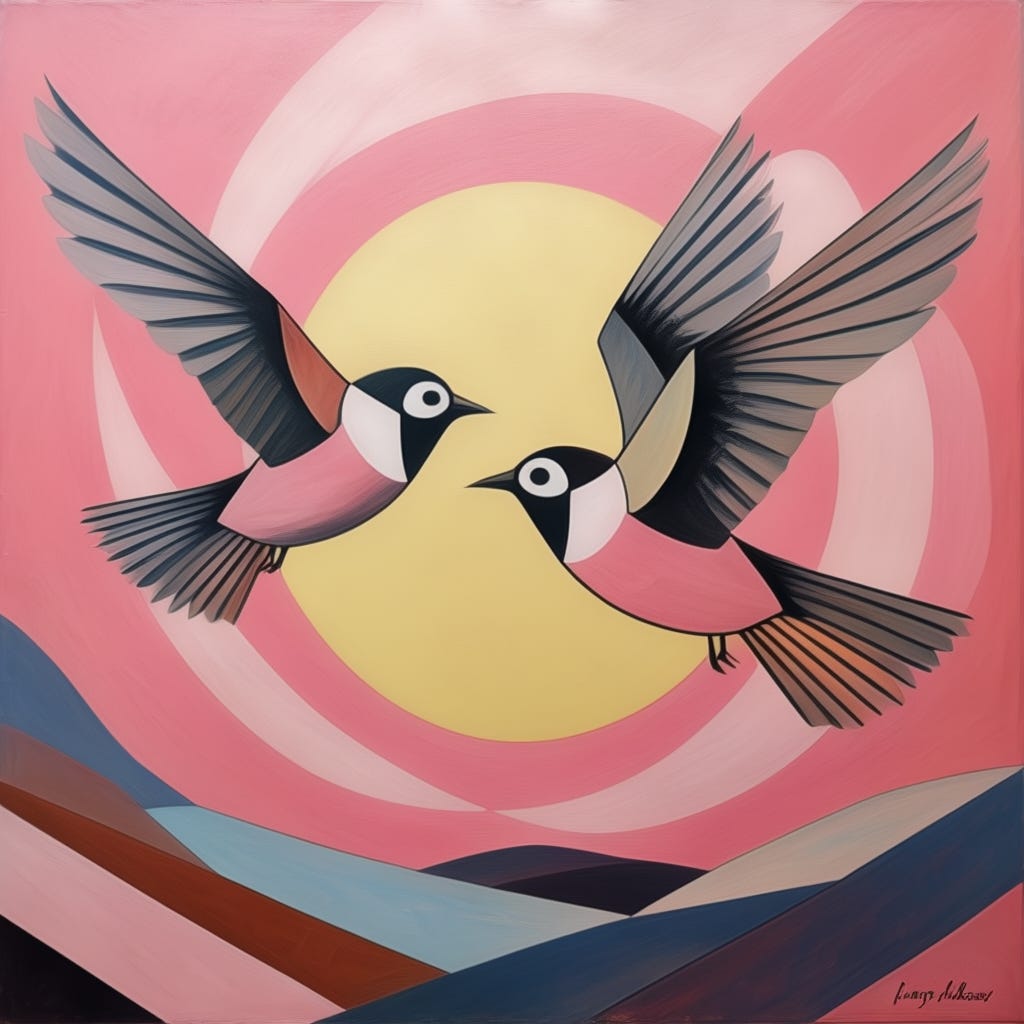being a founder is awkward
in the age of building machines that mimic people, I feel all the more inclined to give my attention to the human condition
Episode 4 of ‘Participation; Aishwarya’s startup journey’. catch up on Episodes 1, 2, and 3.
I had a tough day yesterday. it was Thursday morning, I woke up groggy and a little tired from a busy week. my co-founder and I had our meeting at 8am and I felt slow. I could sense my ideas not landing, and my thoughts coming out slurred. meanwhile she was sharp and insightful as always. I was so embarassed.
I debated if this newsletter needs publishing or should it simply be a journal entry? but true to its namesake, ‘Making meaning from feelings’, this writing comes to you from a painfully honest place.
through pain we find pleasure
the atomic unit of every human endeavor is the relationship between two people. interaction by interaction our relationships are strengthened, kept at stasis, or diminished, whether we like it or not. collaboration is a steady tempo in our lives, and it is certainly part of the symphony of mine.
if you’ve ever wondered how a behemoth tech company comes to be, it starts with two people; Steve and Steve, Mark and Dustin, Larry and Sergey, or Aishwarya and Kye.
as I’m working on my tech startup (which is more a ‘technology project’ at this point), I am naked in front of my friend and co-founder. there used to be a pleasure in remaining mysterious to her that is no longer available to me. a small voice inside my head tells me now is the time to prove my brilliance.
so this newsletter is me squashing that voice here and now. my burning desire to be perfect in her eyes will get in the way of collaboration. just as the desire to appear perfect to a romantic interest is counterproductive, so is performing perfection in a new business partnership.
don’t we all wish others thought us perfect?
my burning desire to be perfect in her eyes will get in the way of collaboration.
the magic happens when we remove ourselves
I have been a student of collaboration for the last ten years. I have witnessed and been part of magical, miraculous collaborations. as a student activist I remember the anarchist spaces I was in that lacked hierarchy. consensus-based collaboration was the only way we moved forward.
my college startup team was a team of four and we had moments of blissful collaboration while building our app. we also had moments of disintegration while making tough decisions, such as when to launch.
at the Wikimedia Foundation I was part of humanity’s greatest technological collaboration — Wikipedia. what does this collaboration demand? it demands astronomical amounts of preparedness, patience, good will, attention to detail, and alignment.
according to collaboration researcher Jim Tamm if you reduce your defensiveness you increase your ability to solve problems. stay in the ‘green zone’ and avoid the ‘red zone’ he says.
the red zone is fear-based, defensive, and combative. it’s when the goal is to win for self only, and it is rigid, reactive, and controlling. if this sounds like the spaces you’re required to be in, I’d love to hear more about your experience (and I’m sending you my best). the green zone is trust-based, collaborative, and cooperative. it where mutual gain and connection with others is valued. it often feels like problem solving, being open to influence, curious, and seeing others as partners.
‘defensiveness does not protect us from other people. it defends us from the fears we don’t want to feel’, Tamm says. essentially, our defensiveness helps us hide from our own fears. so what do we fear? we fear our own significance, competence, and likeability.
I know I am significant and likeable to Kye, so my fear is her thinking I’m incompetent. how do I face this fear? ‘notice when you feel defensive’, says Tamm, ‘look for signs of defensiveness. once you acknowledge that you are feeling defensive you can do something about it.’
what are my signs of defensiveness? they are ‘withdrawal into deadly silence’, ‘sudden drop in IQ/confusion’, and ‘obsessive thinking’. Tamm suggests thinking of action steps to take when you detect signs of defensiveness in yourself.
in the age of building machines that mimic people, I feel all the more inclined to give my attention to the human condition. I don’t love my insecurities and fears, but I don’t wish them away. they clang and clash inside me producing life’s greatest symphony, and it’s ultimately the irrational quirks of people that move me the most.
collective genius over solo genius
in 2014 Harvard’s Dr. Linda A. Hill wrote a paper on collective genius for the Harvard Business Review. she outlines three qualities of collective genius that are worth considering:
creative abrasion: being able to create a marketplace of ideas through discourse. you achieve this by amplifying differences and allowing people to have heated but constructive arguments.
creative agility: being able to test and refine a portfolio of ideas through quick experiemtns, and reflection and adjustment. she calls this ‘discovery driven learning’. this is, in essence, design thinking (i.e. a combination of the scientific method and the artistic process).
creative resolution: doing decision-making in a way where you combine opposable ideas to reconfigure them in a new combination to produce new solutions.
collaboration is both gentle and assertive, intuitive and data-driven, patient and decisive. in the months to come, I am quietly optimistic that my co-founder and I will cultivate this sort of dialectical environment for ourselves.





🖤 it takes a big courage to be open about your feelings especially the vulnerable ones - ironically you talking about your fears about incompetency makes me/people trust you more > creates a bigger room for creativity